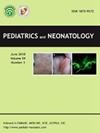五岁以下儿童腹泻疾病的时间趋势及相关治疗对策:2006年至2019年多指标类集调查的启示。
IF 2.3
4区 医学
Q2 PEDIATRICS
引用次数: 0
摘要
背景:尽管孟加拉国的卫生部门取得了重大进展,但其腹泻死亡率和发病率在南亚地区仍然居高不下。鉴于孟加拉国最近发生的重大社会和经济转型,研究过去几十年中腹泻及其治疗模式的演变情况非常重要。本研究旨在评估腹泻频率的时间变化,并确定影响患儿是否得到适当治疗的因素:本研究利用了分别于 2006 年、2012-13 年和 2019 年进行的三次孟加拉国多指标类集调查(MICS)的数据。研究进行了二元逻辑回归,报告的结果包括几率比(OR)和 95% 的置信区间(CI)。结果的 p 值为孟加拉国的腹泻患病率从 2006 年的 7.05% 下降到 2012-13 年的 3.91%,但随后又上升到 2019 年的 8.78%。腹泻儿童接受口服补液疗法(ORT)的比例分别为 68.91%、77.35% 和 70.59%。二元逻辑回归表明,年龄较大的儿童(OR:0.54;CI:0.51-0.58)、女性(OR:0.92;CI:0.86-0.98)、来自高五分位数家庭的儿童以及母亲受过初等教育的儿童(OR:0.9;CI:0.83-0.98)患腹泻的几率较低。然而,年龄较大的儿童(OR:1.45;CI:1.26-1.68)、来自富裕和最富裕的五分之一人口家庭的儿童(OR:1.85;CI:1.47-2.32 和 OR:1.7;CI:1.32-2.2)接受 ORT 适当治疗的几率更高。此外,母亲为小学(OR:1.19;CI:1.01-1.41)和中学或以上教育程度(OR:1.32;CI:1.12-1.56)的儿童的情况也相同:结论:需要采取有针对性的方法来减少腹泻和推广使用口服体液补充疗法。产妇教育是一项重要的干预措施,同时应采取措施减少贫困。未来的政策应考虑以社会经济和环境因素为重点的战略。本文章由计算机程序翻译,如有差异,请以英文原文为准。
Temporal trends of diarrheal diseases and associated treatment responses among children aged under five: Insight from the multiple Indicator Cluster surveys from 2006 to 2019
Background
Despite significant progress in its health sector, Bangladesh has a high burden of diarrheal mortality and morbidity in the South Asian region. Given recent major social and economic transitions in Bangladesh, it is important to examine how patterns of diarrhea and its treatment have evolved over the past few decades. The current study aims to assess the temporal changes in the frequency of diarrhea and identify the factors that influence whether affected children receive proper treatment.
Methods
The current study utilized data from three Bangladesh Multiple Indicator Cluster Surveys (MICS), 2006, 2012–13, and 2019, respectively. Binary logistic regressions were conducted, and the reported results included odds ratios (OR) and 95% confidence intervals (CIs). A p-value of <0.05 was considered statistically significant (α = 0.05).
Results
The prevalence of diarrhea in Bangladesh declined from 7.05% in 2006 to 3.91% in 2012–13, but then increased to 8.78% in 2019. The proportion of children with diarrhea who received oral rehydration therapy (ORT) was 68.91%, 77.35%, and 70.59% respectively. Binary logistic regression indicated that older children (OR:0.54; CI:0.51–0.58), females (OR:0.92; CI:0.86–0.98), children from upper quintile families, and children from mothers having primary education (OR:0.9; CI:0.83–0.98) were less likely to suffer from diarrhea. However, the odds of receiving proper treatment with ORT were higher among older children (OR:1.45; CI:1.26–1.68), children from the rich and richest quintiles (OR:1.85; CI:1.47–2.32 and OR:1.7; CI:1.32–2.2 respectively). Also, it was the same for children from mothers with primary (OR:1.19; CI:1.01–1.41) and secondary or above education (OR:1.32; CI:1.12–1.56).
Conclusion
A targeted approach is needed to reduce diarrhea and promote the use of ORT. Maternal education can be an important intervention, and steps should be taken to reduce poverty. Future policies should consider strategies focusing on socioeconomic and environmental factors.
求助全文
通过发布文献求助,成功后即可免费获取论文全文。
去求助
来源期刊

Pediatrics and Neonatology
PEDIATRICS-
CiteScore
3.10
自引率
0.00%
发文量
170
审稿时长
48 days
期刊介绍:
Pediatrics and Neonatology is the official peer-reviewed publication of the Taiwan Pediatric Association and The Society of Neonatology ROC, and is indexed in EMBASE and SCOPUS. Articles on clinical and laboratory research in pediatrics and related fields are eligible for consideration.
 求助内容:
求助内容: 应助结果提醒方式:
应助结果提醒方式:


